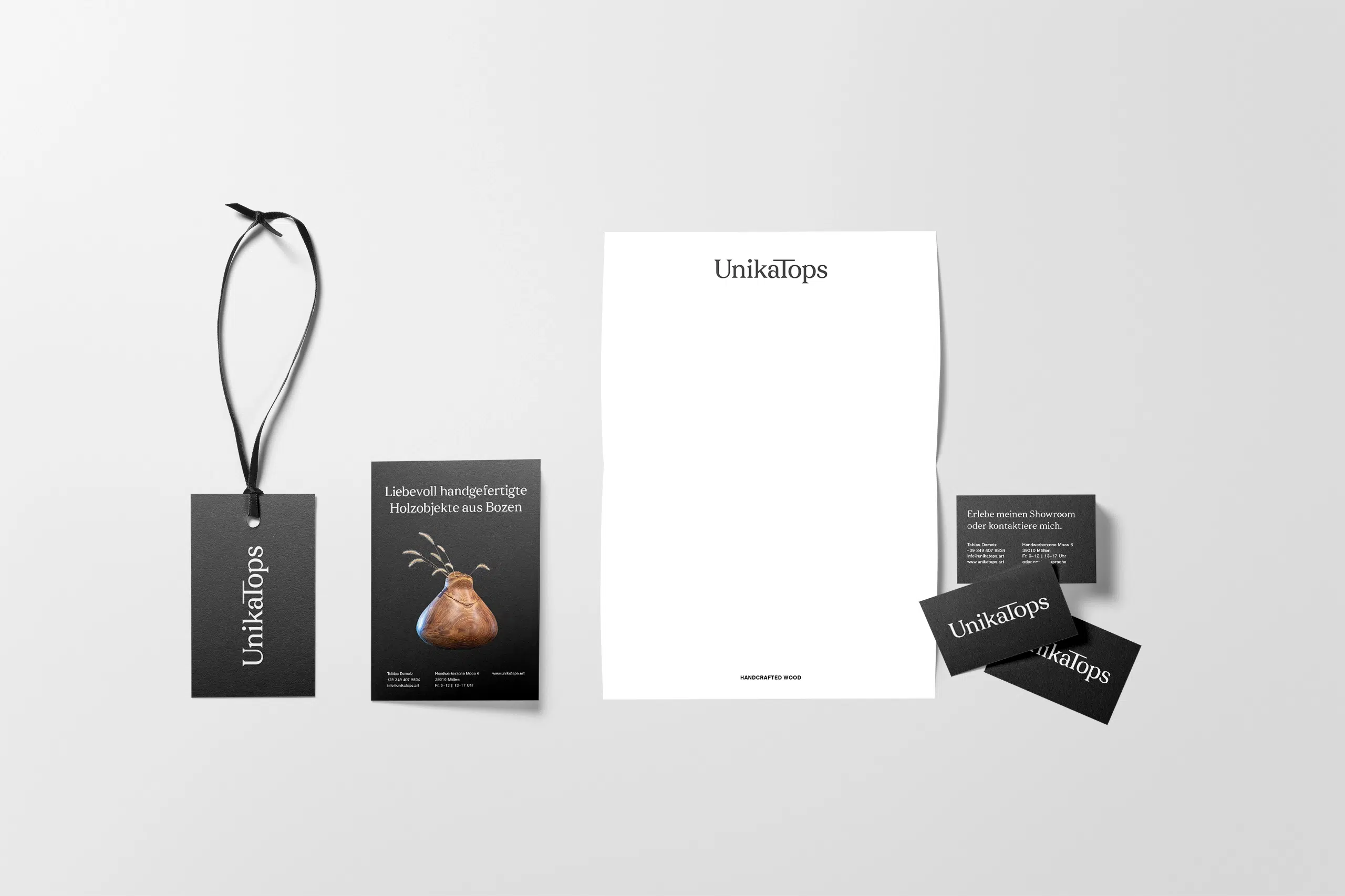In this article, I’ll break down what brand storytelling really means, why it works, and how you can create stories people actually remember.
We’ll also look at how stories shape the way we think, and what you can borrow from great fiction to make your brand communication work harder.
But before we get into the reasons to use brand storytelling, let’s look at why it matters now more than ever.
Why is brand storytelling more important than ever?
People don’t just buy products. They buy into brands. We’re all drawn to stories we recognise, trust, or that inspire us.
Research backs this up: over half of consumers say that brand stories influence what they buy.
But why do stories fascinate us so much in the first place?
From cave paintings to Netflix, stories have always helped us make sense of the world, connect with others, and remember what matters.
That’s why brand storytelling works. Use it well, and your brand becomes more memorable and approachable—something people actually remember.
9 reasons why you should use brand storytelling
1. People crave connection
We’re drawn to brands that reflect what matters to us. Stories are how we feel that connection.
Just think about how shared stories—like those in religion—have brought people together for centuries.
We even use stories in everyday life to bond with others. Evolutionary psychologist Robin Dunbar has found that 65% of our conversations are social in nature—mostly gossip. (Dunbar & M., 2004) But this gossip is by no means irrelevant. It helps us build trust, maintain relationships, and find our place in a group.
This is where brand storytelling comes in. A strong story gives your brand purpose and turns it from just another company into something people want to be part of.
2. Trust is the new currency
According to the Edelman Trust Barometer, 81% of consumers say they need to trust a brand before they’ll consider buying from it. (Edelman, 2019)
But you can’t demand trust. It doesn’t come from a clever slogan or a shiny logo. You earn it by being honest, reliable, and showing up consistently.
Brand storytelling is your chance to show the human side of your business. Share your journey, your wins, and the real challenges you’ve faced.
When people feel like they know your brand, they’re much more likely to trust you—and to choose you over the rest.
3. Stories cut through the noise and stick
Estimates suggest we’re exposed to thousands of marketing messages every day. Some say as many as 6,000 to 10,000, depending on how you define an “ad.” Most of them vanish instantly from memory. But stories stay with us.
That’s because our brains process stories almost as if they were real experiences. We learn from them just as we do from life itself.
Stories spark emotion, trigger curiosity, and make information easier to recall.
Research from Dr Jennifer Aaker at Stanford University shows that people remember stories far better than isolated facts—some summaries report up to 22 times more memorable. It’s another reason why storytelling is one of the most powerful tools in branding today.
4. Stories inspire action
But stories do more than help us remember. They move us to take action.
When we step into someone else’s story, we feel what they feel. The truth is, we act on emotion—not just facts.
In one study, people who were told a personal story about a specific child in Africa donated on average twice as much as those who were presented with statistics alone. (The Power of One, n.d.)
So if you want people to act—whether that’s buying, supporting a cause, or changing a habit—don’t just list facts. Tell stories they can see themselves in.
5. Stories build brand loyalty
A good story can turn a casual buyer into a loyal fan—someone who comes back and tells others about you.
In fact, people are 55% more likely to buy from a brand whose story they can relate to. (The Importance of Storytelling in Marketing: Connect, Engage, and Convert, n.d.)
An example is Patagonia. The company’s stories reflect its values and environmental commitment. This resonates with people who share similar beliefs and feel connected to the brand’s mission.
A strong story can turn a product into something bigger—a movement. People often buy to show who they are.
6. Stories add meaning to your brand
Brand stories give your business meaning and direction. They give your team something to rally around and your audience something to believe in.
Why does this matter? Because people are always looking for meaning.
Even in extreme situations, meaning gives people strength. For example, Holocaust survivor Viktor Frankl wrote that those who could understand their suffering as part of a larger order were more likely to endure. (Viktor Frankl’s ‘Search for Meaning’ in 5 Enduring Quotes, n.d.)
Marketing isn’t life or death, but brand storytelling taps into that same need for meaning.
Take Guinness, for example. Its “Good things come to those who wait” campaign transformed a potential drawback—the long pour time—into a symbol of quality, patience, and reward.
Waiting became part of the experience, turning a simple drink into something meaningful. The famous 1999 ‘Surfer’ ad captured this perfectly and showed that the best things in life are worth waiting for.
7. Stories help differentiate your brand
A good example of this is the Significant Objects experiment. In this experiment, researchers and copywriters increased the total value of simple commodities from $128.74 to $3,612.51 by writing backstories for them. This equates to a 2,706% increase in value through storytelling alone. (Walker et al., 2009)
8. Stories pass on culture and knowledge
Stories have always been how we pass on knowledge, share values, and make sense of our place in the world. From fairy tales to everyday gossip, stories help us understand who we are and where we fit.
Brand stories are no exception. They communicate your organisation’s mission, values, and beliefs.
When you highlight your values in your stories, you build a brand culture that connects your team and your audience.
A great example is Dove’s Real Beauty campaign. By challenging beauty ideals and putting real people at the centre, Dove has created a culture based on inclusivity and self-acceptance. (Dove Wants Women to Redefine Beauty, 2004)
9. Stories entertain and make people feel good
Let’s not forget the simple pleasure a good story brings. Stories can actually trigger the release of dopamine—the feel-good hormone. This matters, especially when times are tough. (Your Brain on Story, n.d.)
Take Marmite. The whole brand is built around the idea that you either love it or hate it. That tension is what makes their communication so memorable—and fun.
Marmite uses this tension humorously in its adverts. One particularly hilarious ad was the ”The Gene Project” campaign. The brand worked with scientists to develop a test. This was used to show that a preference for Marmite is literally in your genes.
Not everyone likes Marmite, but these stories have become part of pop culture. That’s what makes the brand unforgettable.
7 common themes in brand storytelling plus examples
Brand storytelling isn’t just one story. It’s a mix of many. Here are seven themes you’ll see again and again, with examples for each.
1. Origin story
This is the story of where your company started and the key moments that shaped who you are.
- Why was the company founded?
- What challenges has it overcome?
Example
Ben & Jerry’s started with two friends, a $5 ice cream-making class, and a renovated gas station.
2. Mission and values story
These stories show your brand’s purpose and what you stand for.
- How does the brand want to make a difference?
- What fundamental values guide the brand’s actions?
Example
Tony’s Chocolonely’s mission to make its chocolate 100% slave-free is woven into its product design and campaigns.
3. Customer experience story
This is about how your customers use your products or services, and what they get out of it. Real experiences matter most here.
What role does the brand play in customers’ lives? What positive results do they achieve with their products?
Example
In its “No Wasted Days” campaign, Arc’teryx tells the stories of people who find personal strength, a sense of belonging, and new perspectives in outdoor experiences.
4. Employee story
This is about the people behind your brand—their stories, skills, and what they bring to the table. It’s especially important if you want to attract great talent.
- What skills and perspectives do the employees contribute?
- How does the company support its employees?
Example
Mailchimp often showcases its company culture through the diverse talents and personal projects of its employees.
5. Product story
This is where you show what makes your products different. Focus on the problems you solve and what sets you apart.
- What problems are the products solving?
- What makes them different?
Example
Dyson’s narrative focuses on its technical innovation and how its products effectively use technology to solve everyday problems.
6. Community involvement story
This kind of story is about how your brand gives back and the causes you support.
- How does the brand give back?
- What impact does it want to make?
Example
LUSH’s strong commitment to ethical supply chains and against animal testing is an integral part of its brand communication.
7. Industry leadership story
These stories show your brand as a leader in your field and highlight your expertise.
How is the brand shaping the future of the industry?
What groundbreaking innovations has it introduced?
Example
Allbirds highlights its sustainable materials and its excellent carbon footprint, positioning itself as a pioneer in sustainable footwear.
8 steps to craft your brand stories
So, you know why brand storytelling matters and what shapes it can take. But how do you tell your own story?
Let’s look at how you can craft a story that actually connects with people.
1. Understand your audience
Before you write your story, step into your audience’s shoes. The best stories speak to what your audience cares about, what frustrates them, and what they hope for.
Ask yourself:
- Who am I talking to?
- What do they care about?
- What’s going on in their life when they encounter my brand?
- What problem do they need to solve, or what aspiration do they have?
Tip
Create a simple audience persona. It doesn’t have to be perfect. It just helps you keep your stories focused and relevant.
2. Clarify your core message & values
Once you know your audience, get clear on the main message you want them to remember.
- What transformation, change, or improvement does your brand bring to the audience’s life?
- What values drive your brand?
- What do you want your audience to feel when they hear your brand story?
Tip
Defining your core message and values is how you make your brand stand out.
3. Structure your story
Good stories have a clear structure that takes people on a journey. When you craft your brand story, you can use the classic structure you see in most great stories.
Donald Miller uses this structure in his book Building a StoryBrand. It helps you build tension and get your message across clearly.
Every brand story should include these elements:
- Protagonist: Who is the main character? It could be your customer (most often), the founder, or even the brand itself.
- Goal: What does the protagonist want, and why does it matter? This is what drives the story.
- Obstacle: Every story needs tension. What’s getting in the way? Think about both internal and external struggles.
- Guide: In most cases, your brand is the guide. How can you help the protagonist move forward?
- Plan: What steps does the protagonist take to overcome the problem? Show their journey.
- Stake: What is at stake if the protagonist fails? Make it clear what’s at stake to increase emotional engagement.
- Transformation: How does the protagonist change by the end?
Tip
You can download Donald Miller’s famous StoryBrand worksheet, here. It’s a little different from my structure above.
4. Identify brand triggers
Your brand story is really a collection of smaller moments that add up to a bigger narrative. You share these micro-stories across different platforms and formats—which can get quite scattered.
To help people recognise your brand instantly, find themes that act as triggers—things people immediately associate with you.
These triggers or themes could be:
- Styles: Recurring motifs, such as Red Bull’s wings theme, Mastercard’s “Priceless”, or a distinctive setting.
- Moments: Simple actions, like twisting an Oreo or adding lime to a Corona.
- Components: Iconic elements, like the grey Whiskas cat.
Tip
Once you’ve found your brand triggers, use them consistently in your stories. Over time, they’ll make your brand instantly recognisable.
5. Incorporate emotion
Emotions are at the heart of every good story. Without them, your story won’t connect. Think about what feelings you want your brand story to spark.
- Should it embody rebellion, like Oatly, which challenges the dairy industry with its unconventional message?
- Or perhaps nostalgia, like Vacation Sunscreen, which evokes memories of carefree summer days?
- Or would you like to inspire the drive for self-improvement and perseverance, like Nike?
Tip
Make sure the emotions you spark match your brand’s personality. That’s what creates a consistent, authentic experience.
6. Be authentic and human
Ultimately, people connect with people. So show the human side of your brand.
Share behind-the-scenes moments. Tell honest customer stories. Share your brand’s origin. Put your team and your customers front and centre.
These personal touches build connection, show your brand’s personality, and help create loyalty.
Tip
Authenticity shows in the small, genuine moments. Share everyday scenes, honest insights, or little anecdotes. That’s what makes your brand feel real and approachable.
7. Use the right channels to tell your stories
Your brand story isn’t limited to one place. Share it in small snippets across different platforms and at different times. Each micro-story adds to the bigger picture.
But who says storytelling has to be just words?
Visual elements bring your stories to life and make them more memorable. Use photos, videos, graphics, and real-life events to share your message in different ways.
Here are some examples:
- Website: Your branded website is the hub for your storytelling. Use it to share customer stories, images, and information that reinforce your brand message.
- Social media: Share quick, easy-to-digest content—behind-the-scenes moments, customer feedback, and inspiration. Platforms like Instagram, TikTok, and LinkedIn are perfect for this.
- Videos: Video brings together image, sound, and emotion to engage people on multiple levels.
Tip
Don’t assume everyone sees everything. Share your brand story across different channels so you meet your audience wherever they are. Repeat your stories in different ways.
8. Be consistent
Consistency is key. Keep your tone, style, and message the same across all your brand storytelling.
The best stories can be told in many ways. Once you’ve developed your core brand stories, tell them again and again—each time with a fresh but consistent approach.
Tip
It’s easy to get carried away with new ideas, but your core brand stories should stay consistent.
Create a simple cheat sheet with your key messages, tone, and visual style. Repeating them is what makes your brand recognisable and builds a connection.
Emerging trends in brand storytelling
Once you’ve got the basics of brand storytelling, it’s worth looking at where things are heading. Storytelling keeps changing as technology, culture, and audience habits shift.
To keep your brand story relevant, here are five trends that will shape how brands tell stories in the coming years.
1. Hybrid storytelling: human & machine
Artificial intelligence isn’t just a novelty anymore. Brands use AI to brainstorm, create variations, and personalise stories faster than ever. But it’s still the human touch that gives stories meaning.
If you’re curious about how AI is shaping creativity and content, this article offers a look at how artificial intelligence is changing writing and storytelling—without losing the emotional core that makes them human.
Example
- PUMA’s experimental AI-generated ad is a good example. An AI-agent team handled concept, script, image and video production, while the brand oversaw strategy, tone and voice. It shows how brands can leverage machine speed and scale without giving up human meaning.
2. Immersive & multi-sensory experiences
Immersive, multi-sensory experiences are on the rise.
With AR, VR, and interactive storytelling, brands can let people step right into their world. The stories that stick are the ones you can actually feel.
At the same time, all this technology has us craving real, physical experiences more than ever.
So look at your brand’s touchpoints—your website, packaging, or in-store experience—and find ways to make them more immersive.
Example
IKEA’s “Place” AR app lets people visualise furniture in their homes, merging narrative with lived experience.
3. Hyper-personalisation & localisation
Telling the same story to everyone doesn’t work anymore. Brands that tailor their stories to smaller, specific groups stand out—but only if it feels personal, not robotic. The future is personalisation that feels real.
Try localising your best content. Update the examples, visuals, or tone to fit your audience’s culture and see how people respond.
Example:
Let’s use IKEA again. Its campaign for its Penang store used dialect wordplay to say—for instance—“We’re not Kay Kia (a local slang for ‘chick’), we are IKEA.” By embedding language and local humour into the story, they created a connection with this specific group.
4. Purpose & values as the core of a brand’s story
People no longer buy into brands just for what they sell. They care about why you exist. Your values aren’t a nice add-on; they are your story.
The best stories don’t just talk about values. Let your actions show them—through how you source, communicate, design, or give back.
Example
Who Gives a Crap is a toilet paper brand that uses cheeky storytelling to address a serious issue: global sanitation.
They donate 50% of profits to build toilets and improve hygiene in developing countries. Their playful tone (“Good for your bum, great for the world”) makes their purpose accessible and memorable.
5. From content overload to meaning
There’s so much content and noise online that people crave meaning more than ever. The next wave of storytelling will be less about producing more and more and more about creating meaning—whether that’s fun, inspiration, or a deeper sense of connection.
So before you publish anything, ask yourself: Does this add meaning or just more noise?
Example
Rains’ playful lookbook invites people to add stickers and dress people in their copies. That’s a simple way to turn a brochure into a tactile and fun, interactive experience.
Key takeaways
- Brand storytelling helps you build an emotional connection with your customers. It encourages them to buy from you and stick around.
- Stories tap into our need for connection, meaning, and belonging. They make your brand more relatable and memorable.
- By sharing your brand’s story, you show what makes you different and increase your value in people’s eyes. That’s how you stand out.
- Good stories communicate your values, create a shared vision, and build a strong brand culture.
- Common themes in brand storytelling include your origin story, your mission, customer experiences, stories from your team, your products, your social engagement, and your role as a founder.
- The key steps for a strong brand story are:
- Understanding your target audience
- Clarifying your brand values
- Structuring your story meaningfully
- Evoking emotions
- Being authentic and human
- Using the right channels
- Staying consistent
So why does brand storytelling work?
With the right strategy, you can turn your brand from just another product into something people identify with and get excited about. Something they won’t forget.
Whether you’re a startup or an established brand, weaving storytelling into your strategy can set you apart.
If you found this article useful, check out these four must-reads that go beyond the usual branding books. Two of them have shaped how I think about storytelling.
So, what’s the story behind your brand—and how will you tell it in a way that actually connects?
References
- The Atlantic. The Psychological Comforts of Storytelling
- Reporter. The Evolution of Storytelling
- Title Image by Mikhail Nilov





















